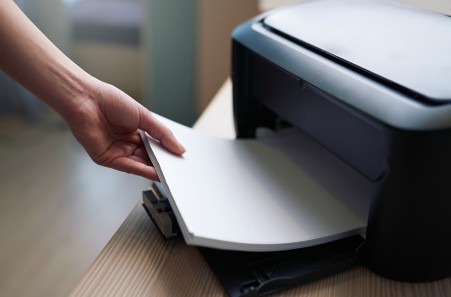Are you unsure of which partitioning type to use for your SSD – MBR or GPT? GPT is the newer of the two, and offers more cost-effective storage, better data protection, and the ability to store larger partitions. Therefore, GPT should be the go-to choice when partitioning your SSD. Don’t settle for anything less – choose GPT for reliable and secure storage.
Introduction
When it comes to setting up a new SSD, one of the most important decisions you’ll have to make is choosing between MBR and GPT partition styles. MBR (Master Boot Record) and GPT (GUID Partition Table) are two different partition styles that determine how your storage device is structured and how data is stored on it. Choosing the right partition style for your SSD can have a significant impact on performance, compatibility, and overall functionality.
In this article, we’ll take a closer look at the differences between MBR and GPT and help you decide which one is the best fit for your SSD. Whether you’re building a new system from scratch or upgrading an existing one, understanding the pros and cons of each partition style is essential to ensure that your SSD performs optimally and meets your specific needs.
What is MBR?
When it comes to choosing the partition scheme for your SSD, it’s important to understand the difference between MBR and GPT. MBR, or Master Boot Record, is the older of the two partition schemes and has been around since the days of DOS. It uses a 32-bit partition table and can support up to four primary partitions or three primary partitions and one extended partition. Each partition can be a maximum of 2TB in size. GPT, or GUID Partition Table, is the newer partition scheme and is used by modern UEFI-based systems. It uses a 64-bit partition table and can support up to 128 partitions.
Each partition can be up to 9.4 zettabytes in size. While MBR is still commonly used, GPT is becoming the preferred choice for SSDs due to its ability to handle larger drives and its support for UEFI. If you have a newer system with UEFI firmware, it’s recommended to use GPT for your SSD. However, if you have an older system with BIOS firmware, MBR may be the better option. Ultimately, the decision of which partition scheme to use will depend on your specific needs and system requirements.
What is GPT?
When it comes to choosing the right partition scheme for your SSD, GPT is a term that you will come across quite frequently. GPT stands for GUID Partition Table, which is a newer and more advanced partitioning scheme compared to MBR or Master Boot Record. Unlike MBR, GPT supports disks larger than 2 TB and can support up to 128 partitions. Another advantage of GPT is that it includes a backup partition table at the end of the disk, which can be used to recover the primary partition table in case of corruption.
GPT also uses a more advanced boot loader system, which allows for faster boot times and better security features. Therefore, if you have a modern system with a UEFI BIOS, it is recommended to use GPT. With GPT, you can take full advantage of your SSD’s capabilities and ensure that your system is running at its best.
Comparison of MBR and GPT
When it comes to choosing between MBR and GPT for your SSD, it’s important to understand the key differences between the two. MBR, or Master Boot Record, is the older partitioning scheme that has been in use since the 1980s. It supports a maximum of four primary partitions or three primary partitions and an extended partition, which can be divided into multiple logical partitions. On the other hand, GPT, or GUID Partition Table, is the newer partitioning scheme that was introduced with UEFI systems.
It supports up to 128 partitions and does not have the limitations of MBR, such as the 2TB partition size limit. In terms of compatibility, MBR is more widely supported by older systems, while GPT is recommended for newer systems with UEFI firmware. Ultimately, the choice between MBR and GPT will depend on your system’s requirements and compatibility. If you’re using an older system or have specific software requirements that only work with MBR, then it may be the better option. However, if you have a newer system with UEFI firmware or require the larger partition sizes offered by GPT, then it is the recommended choice.
When to Use MBR for Your SSD?
When it comes to choosing the right partition style for your SSD, there are certain situations where MBR is the better option. Firstly, if you have an older computer that uses BIOS instead of UEFI, then MBR is the only option available. Additionally, if you have a small SSD with a capacity of less than 2TB, then MBR is a good choice as it has a smaller partition table and uses less disk space. MBR is also more compatible with certain operating systems such as Windows XP and older versions of Linux. However, if you have a larger SSD with a capacity of over 2TB or you plan to install multiple operating systems, then GPT is the better option as it supports more partitions and can handle larger disk sizes. Ultimately, the choice between MBR and GPT depends on your specific needs and system requirements.
When to Use GPT for Your SSD?
When it comes to deciding whether to use GPT for your SSD, there are a few factors to consider. GPT is generally recommended for newer systems with UEFI firmware, as it allows for larger partition sizes and more partitions overall. If you plan on using your SSD for a boot drive, GPT may also be a better choice, as it supports secure boot and can handle drives larger than 2TB.
Additionally, if you need to convert an existing MBR disk to GPT, you’ll need to use a third-party tool, so it may be easier to simply use GPT from the start. However, if you’re using an older system with a BIOS firmware, MBR may be the only option. Ultimately, the decision of whether to use MBR or GPT for your SSD will depend on your specific needs and system requirements.
Conclusion: Which Should You Choose For Your SSD?
In conclusion, choosing between MBR and GPT for your SSD depends on your specific needs and preferences. If you have an older computer or need to install an older operating system, MBR may be your best bet. On the other hand, if you have a newer computer or need to use a larger drive, GPT is the way to go. It’s important to keep in mind that GPT comes with its own set of benefits, such as the ability to create more than four partitions and support for larger drives.
Ultimately, the choice is yours, but it’s important to do your research and make an informed decision based on your individual needs. Whatever you choose, make sure to back up your data before making any changes to your disk partitioning.



